
It has been a while since we posted a progress update on the website, but this year I really wanted to go over the anniversaries of Lucky Thirteen in real time. I hope everyone enjoyed them!
Throughout this period, work has not stopped. Here are some updates of our work since July.
The week of Halloween 2020 was a rough one:
Tuesday: Cross-state (SC) to sort out a parts donation (more to come). 181 miles.
Wednesday: Asheville, NC to deliver tail boxes to Ray. 302 miles.
Thursday: Douglas, GA to pick up parts from “Liberty Belle” team. 405 miles.
Friday: Met Ray halfway to deliver previous day’s parts. 104 miles.
Naturally, these trips mean that there are A LOT of updates to share. I think I will start with one of the pieces I picked up in Douglas.
My friends, we now an internal ammunition magazine for our future ball turret.
Now, I realize some of you may be confused, maybe thinking the ammunition fed from outside the ball. Not quite. The only ball turret I found in my research that was designed to use external cans was the Type A-13A, which entered service in the spring of 1945. The A-13A was a retractable ball turret primarily used on the short-lived Consolidated B-32. Since the war ended briefly after the A-13A entered production, there was a surplus of external fed cans on the postwar market – which is why they are so common in restorations.
F-model B-17s carried Type A-2 ball turrets – the earliest variant. While the ball turret was design by Sperry Gyroscope, they were actually manufactured under contract by two different companies: Briggs Auto Manufacturing of Detroit, MI and Emerson Electric of St. Louis, MO. Ball turrets from these companies can be distinguished by their interiors: bronze green for Emerson and gray/silver for Briggs.
We plan to install a Briggs model ball turret aboard Lucky Thirteen. The parts donated by Fred last year are Briggs parts and the serial numbers on this magazine also conform to a Briggs.
The magazine is stainless steel. One of the loading ports is slightly bent and the yellow coating and rusted bolts will have to be removed – otherwise, the magazine is in great shape. The rarest bits, the internal baffles, are all still in place. In wartime this magazine held 1,016 rounds of ammunition.
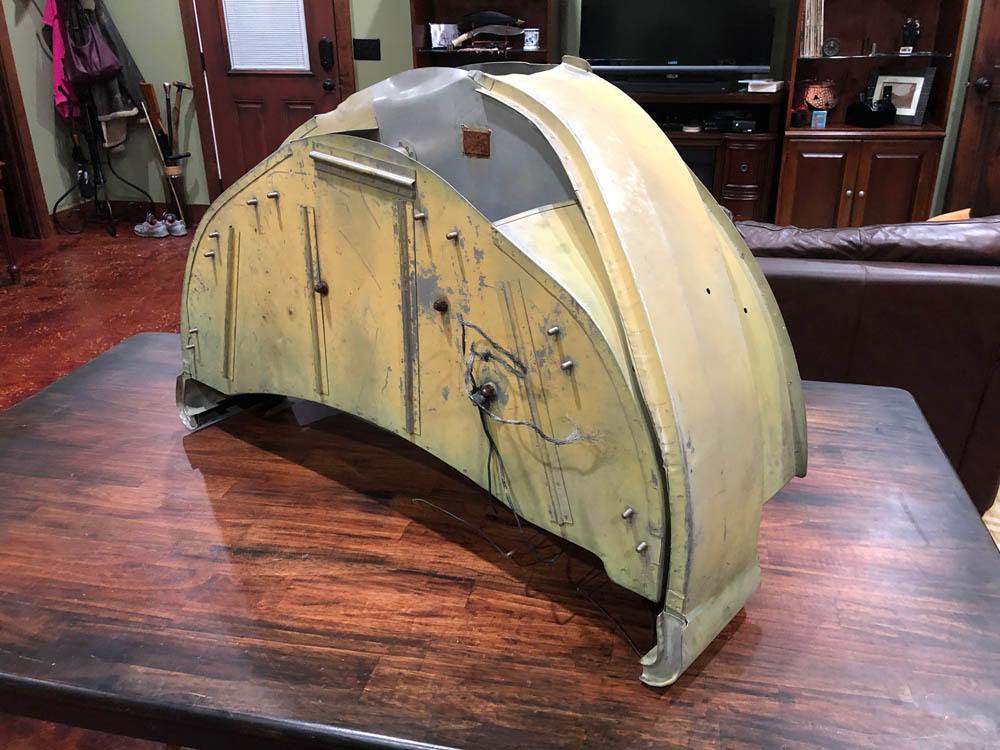

The Briggs ball turret magazine sits on my dining table.
Photo taken 29 October 2020.
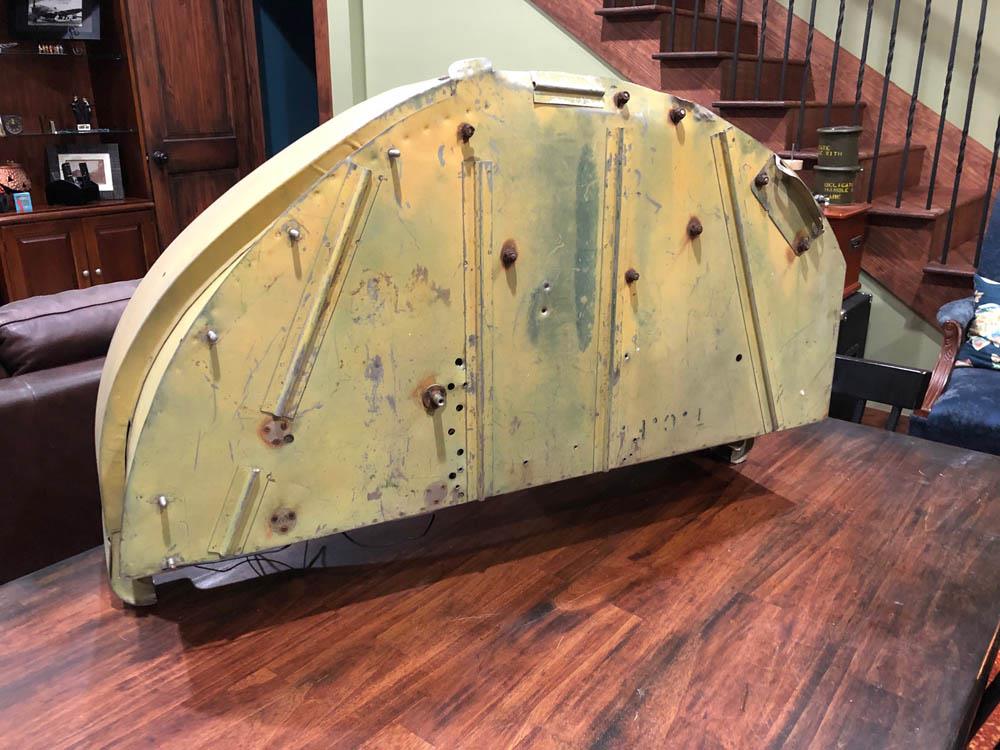
The Briggs ball turret magazine sits on my dining table. The four discolored areas on the bottom left show where the turret’s fuse box was once located.
Photo taken 29 October 2020.

The bent portion of the ball turret ammo magazine. This can be easily repaired.
Ball turret magazines complete with their internal baffles are quite rare. The baffles help prevent ammo jams. Note the metal ammo rollers at the top of each feed. You might also see some leaves in there!
Photo taken 29 October 2020.

The ammo magazine is highlighted red in this manual photo of a Briggs-built ball turret.
Note the K-4 gunsight. This is an early K-4, as evidenced by its switches being mounted on the surface. Later models had recessed switches. If you have an early K-4 that you would like to contribute to Lucky Thirteen‘s ball turret, please let us know!

An Emerson-built ball turret, as evidenced by its dark green interior.
For those interested, the ball turret installed in Memphis Belle is an Emerson.
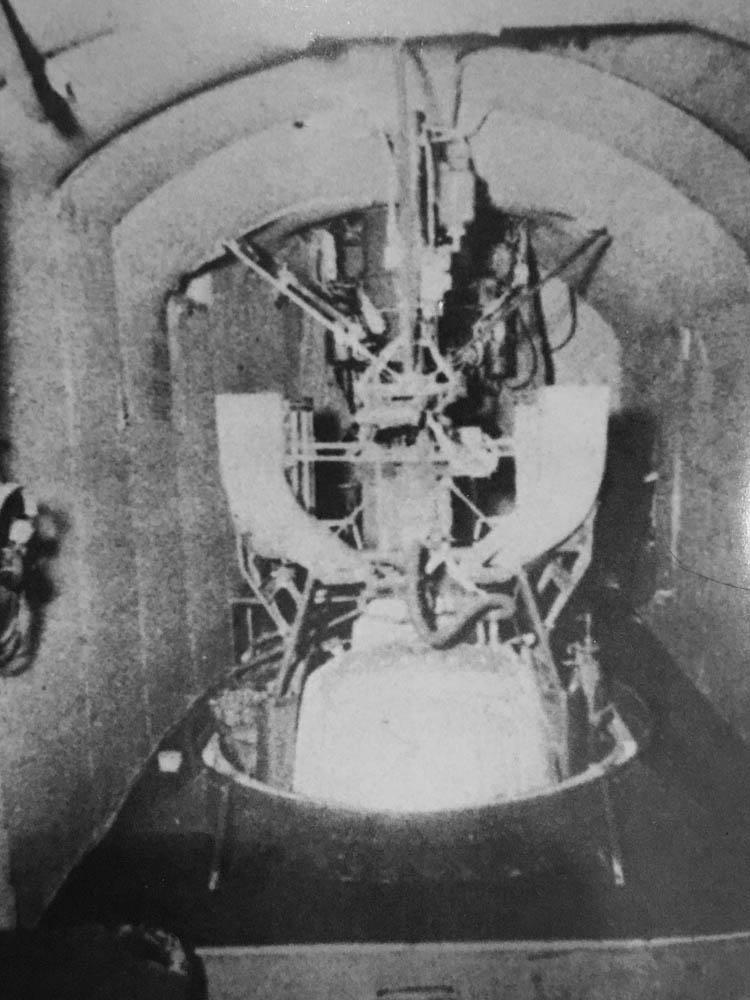
A rare photo of an A-13A ball turret aboard a Consolidated B-32 Dominator.
The A-13 was designed for the Consolidated B-24 and was a retractable variant of the A-2A. The A-13A replaced the internal feed of the A-13 with external cans.
I have heard that some late B-24s also carried A-13As, but so far, this is the only wartime photo I have found of a ball turret with external ammo cans.
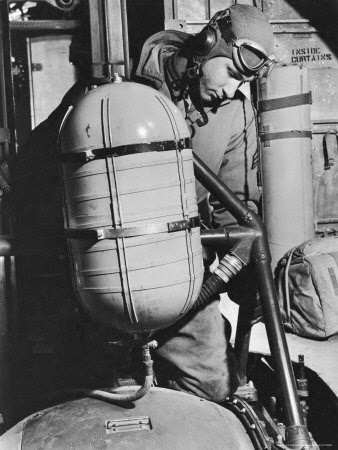
SSGT James M. Abbott (97BG) adjusts his A-2 ball turret in this photo by Margaret Bourke-White.
Note the two bags behind him, which hold the aircraft’s Gibson Girl emergency radio.
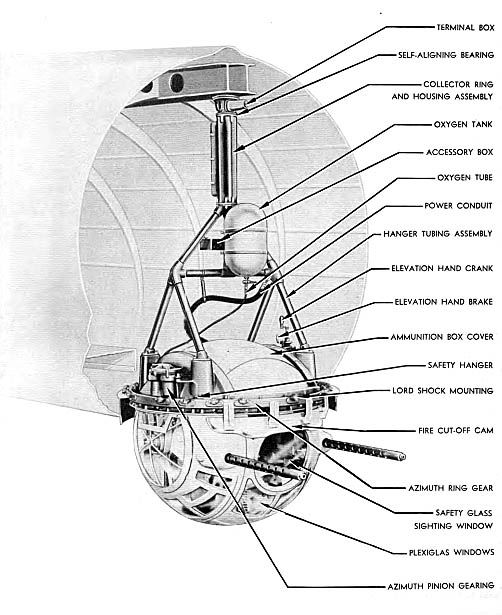
A manual drawing which illustrates the Type A-2 ball turret. This model was common on E and F model B-17s. The A-2A, which had a smaller hanger assembly, was most common on G model B-17s.
Note the rounded Plexiglas covers on the turret’s sides, which were common to A-2 ball turrets. If you can help us locate these pieces – either by donating originals or creating replicas – please let us know!
Now some of you may be wondering: “What ever happened to those ammo boxes Gerad was working on for the tail gun position?”
No worries. Just finished them today!
The effort to begin building ammo boxes for Lucky Thirteen began back in July, creating a series of 3D models to make sure we interpreted the blueprints correctly. While Bob Hachmann had generously offered to fabricate the metal pieces for the boxes, I was too excited to wait for him to finish some pieces first. Since the tail boxes only had a single metal plate each, I started there.
The boxes are made from Douglas Fir with Spruce stringers – typical of Boeing’s wooden components. Since Fir is not a local wood, we had to make a special trip to the coast (Berlin G. Meyers Lumber of Charleston, SC) to pick up the correct wood. The panels were cut out using the CNC machine to ensure they match the blueprint measurements down to the decimal.
My wife and I are perfectionists, so the most time consuming part was the finishing process (decals, sanding, lacquering, etc.). This is what was going on during the Lucky Thirteen 77th anniversary post series.
The last bits were to test fit the one ammo chute we have and to sew the corner bump pads. The blueprints did not have a proper pattern for these pieces, only a drawing of the finished product, so I had to make a series of paper templates in order to assemble a proper pattern. My wife sewed the final pads by hand, using period no. 12 canvas (the material called for in the blueprints).
There are a couple brace pieces that will need to be added when the boxes are ultimately installed. We held off on adding these for now as the boxes will not sit flat with them attached.
We would love to fill these boxes with dummy ammo and, more importantly, attach their ammo feed chutes. The chutes in the tail and radio compartments have odd curves in them which require mating portions of left and right-hand chutes in order to feed correctly. So far, Hangar Thirteen only has a single right-hand chute (which I must keep free in order to test fit our other boxes). If you can help out with these issues, or would like to contribute in some other way, please let us know! Alongside donating pieces, we can always use volunteers, particularly those skilled in metal fabrication, metal casting, 3D printing and scanning, plastics, sewing, white-ink decals and dry-transfers, and cloth-covered wire.
Special thanks to my wife Megan for sewing the pads and recreating the original decals, to my dad for helping me in the wood shop, to Karl Hauffe for patiently answering technical questions, to Chris Wilkinson for reviewing progress photos, to MoBat for lathing the ammo rollers, and Bob Hachmann for the metal strike plates. Guys, I cannot wait to start our next boxes!
Keep the show on the road!
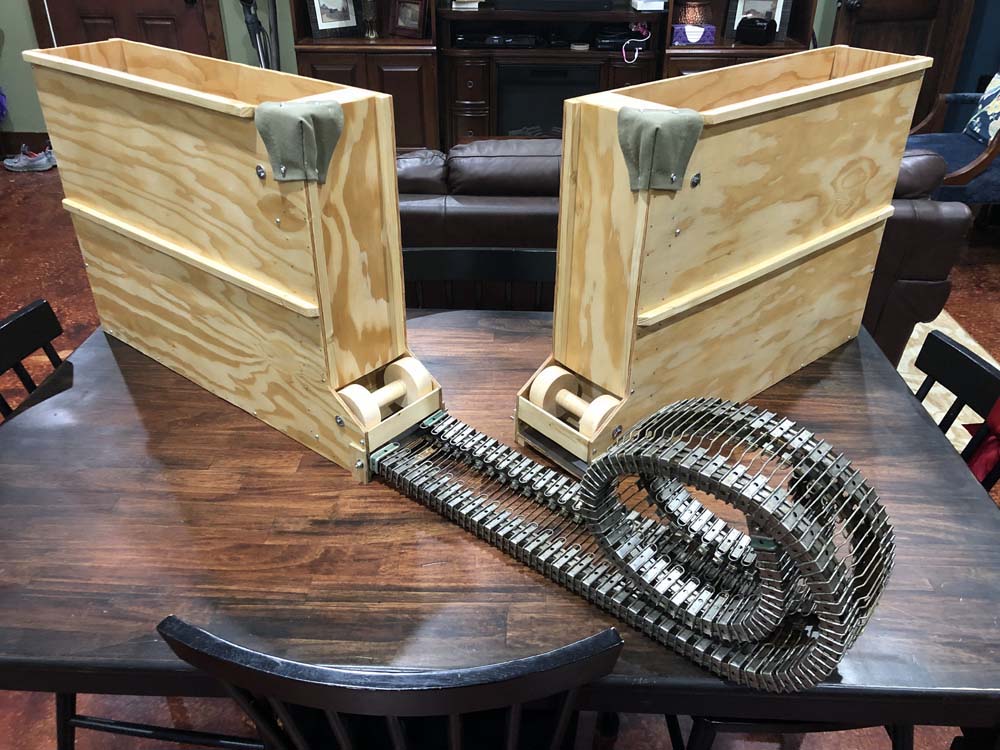
The finished boxes sitting on my dining table.
When installed, they sit on either side of the tail gunner, slightly behind. The corner pads are to keep the boxes from catching on his uniform.
Photo taken 16 October 2020.
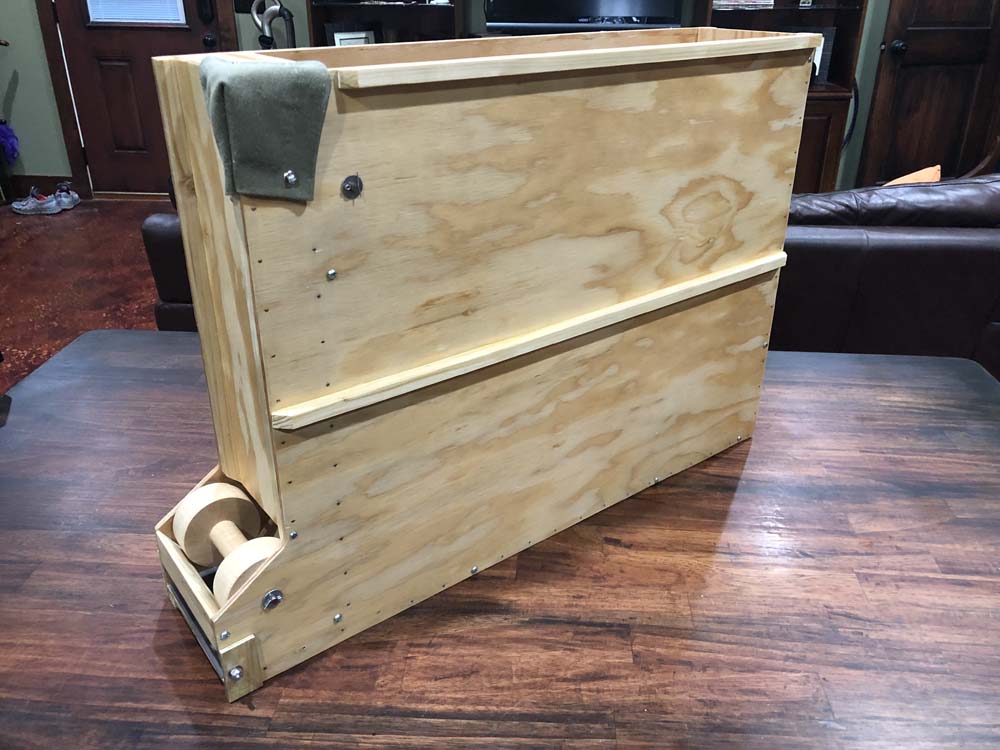
The finished right-hand tail gun ammo box on my dining table.
Photo taken 16 October 2020.
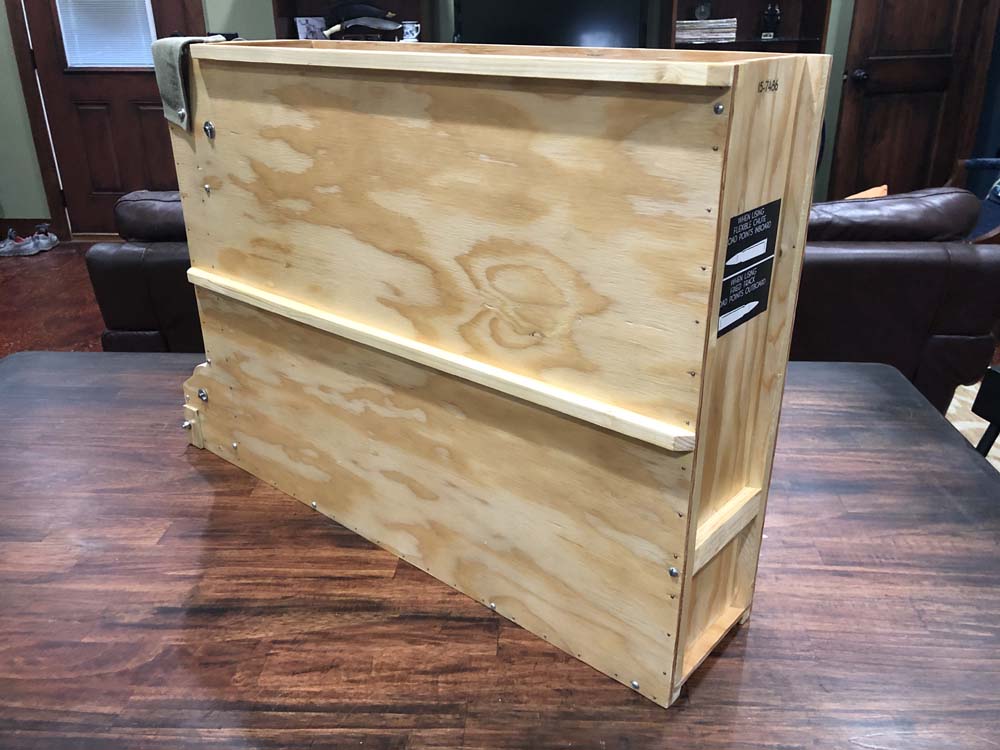
The finished right-hand tail gun ammo box on my dining table.
My wife works in advertising as a graphic designer, so recreating the decals from the blueprints was easy for her.
Photo taken 16 October 2020.

The finished left-hand tail gun ammo box beside my book shelves.
Photo taken 16 October 2020.
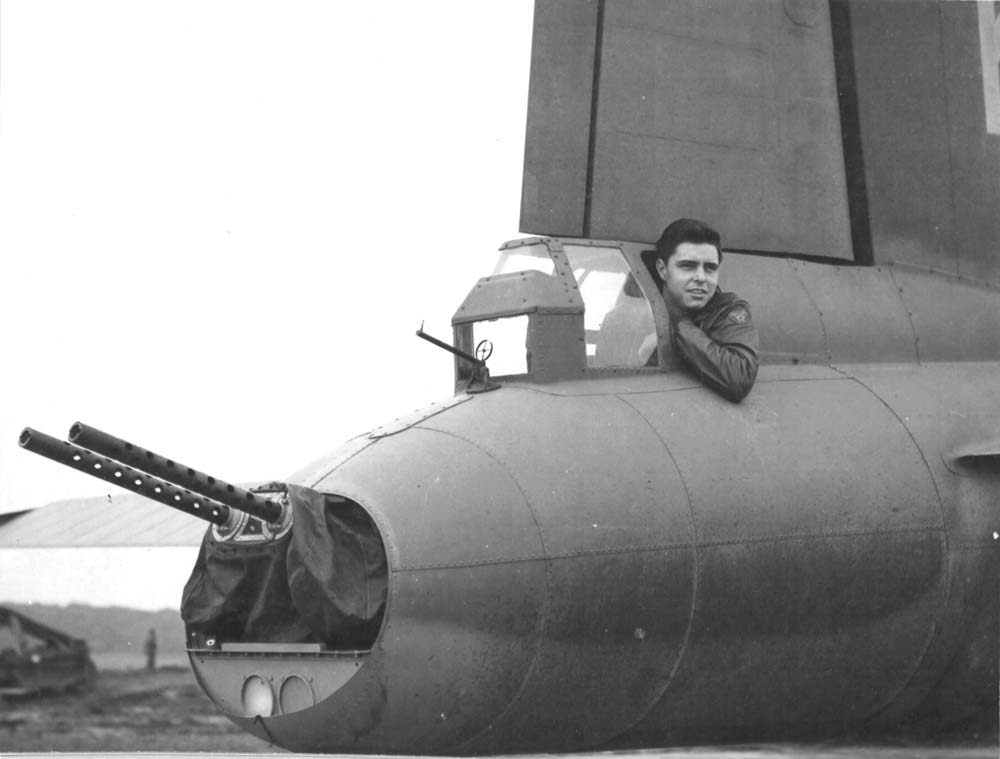
SSGT James F. Jones leans out the tail gun window of Gremlin Gus II (42-5904, 388BG). While the guns are still pointed upward for safety’s sake, the barrels have been removed for maintenance.
Gremlin Gus II crash-landed upon returning from a strike on 16 September 1943. The bomber was repaired for use in Project APHRODITE, being converted into a radio-controlled bomb. APHRODITE was cancelled before Gremlin Gus II could participate and she was scrapped at war’s end.
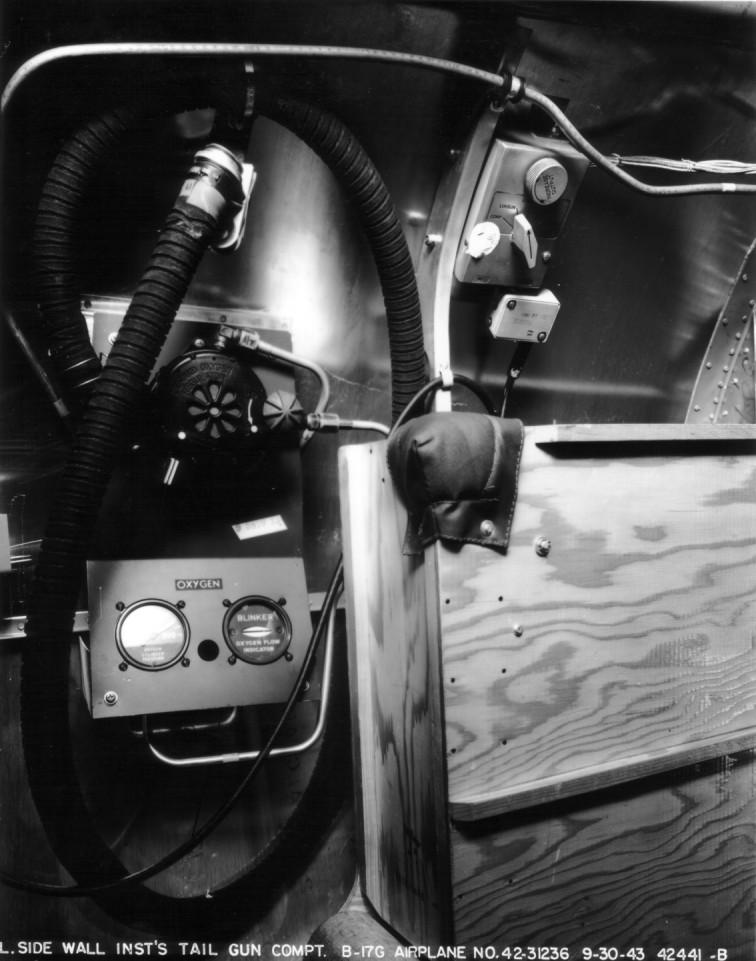
The right-hand ammo box in the tail of Arch Bishop (42-31236, 306BG). Due to the photo being black and white, it can be easy to mistake the corner pad for leather. It is not – it is canvas.
Note the small nails used to strengthen the wood panels, as period wood glue was notoriously poor.
Arch Bishop was lost on 11 January 1944 when another aircraft in her formation, Norah (42-31538, 306BG), lost control and collided with the bomber over Holland. There were no survivors.
Photo taken 30 September 1943.

The tail gun position of 42-31283, a B-17G that never left the states. The ammo boxes have not been installed yet, though you can see where they would later be located. The gunner sits on the bicycle seat, his knees on the padding and his chest against the armor plate.
Photo taken 10 June 1943.
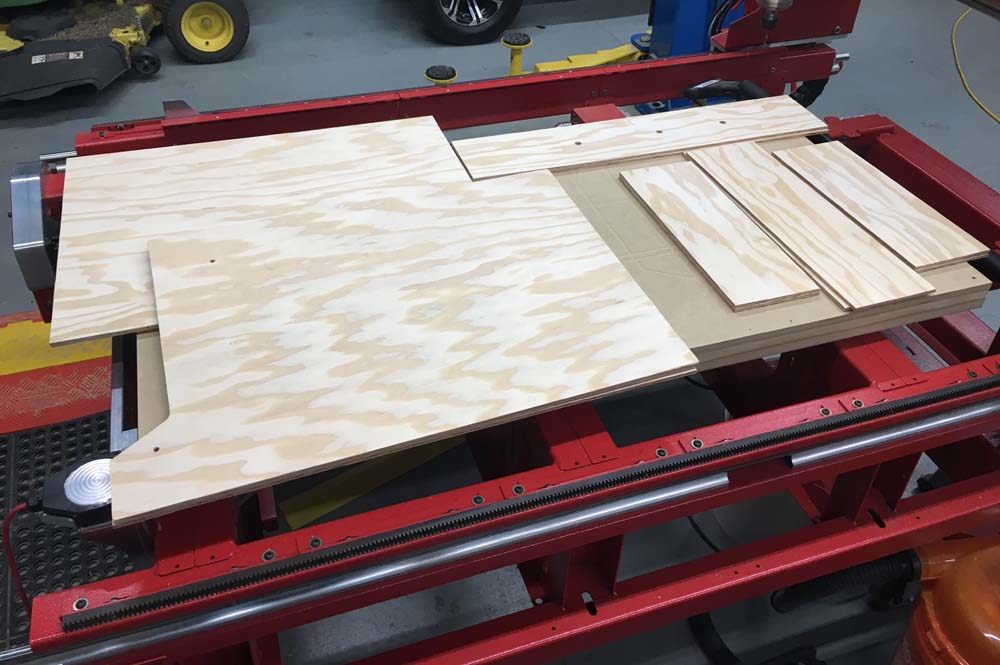
The individual panels are cut out using the CNC machine. The wood is Douglas Fir. The machine is made by Legacy Woodworking of Springville, Utah.
Fir is not a local wood and requires taking a road trip to Charleston whenever needed. Must do whatever is necessary to be accurate!
Photo taken 24 July 2020.

An empty .50 caliber cartridge is placed in the box during assembly to give an idea of scale. Each tail gun box held 565 rounds. The belt was folded, wrapping around the top roller and dropping down under the bottom roller as it fed out.
The rollers were donated by MoBat of Bernie, Missouri, a custom baseball bat maker who generously hand-lathed these parts for us. This style of roller came into use during the war when the original phenolic tubing came in short supply.
If you would like to help fill these boxes with dummy ammunition, just let us know!
Photo taken 30 July 2020.
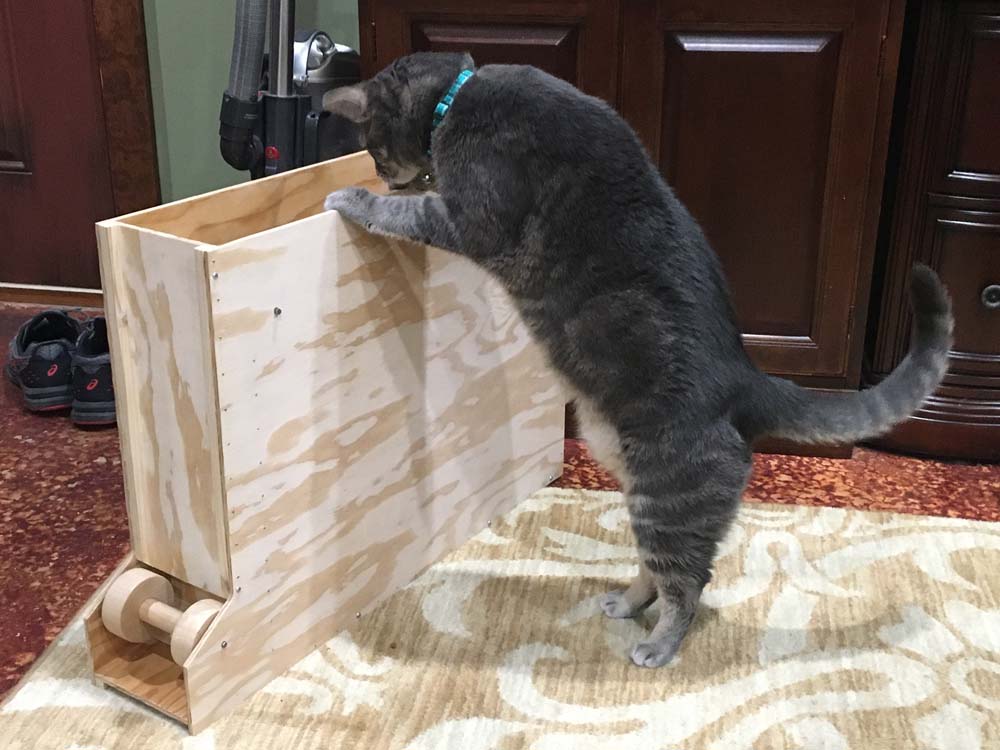
Toonces inspects my work as I being installing the outer wall.
Photo taken 1 August 2020.
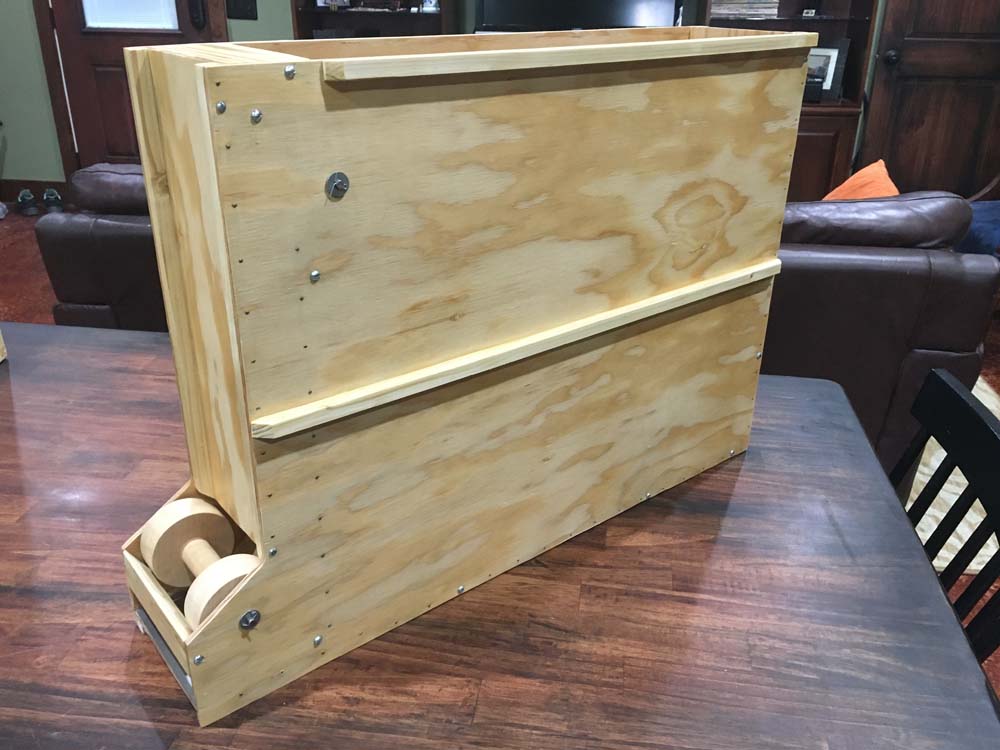
The outer stringers are installed and the lacquer clear coat applied. The wood is now taking on a golden color.
Photo taken 31 August 2020.
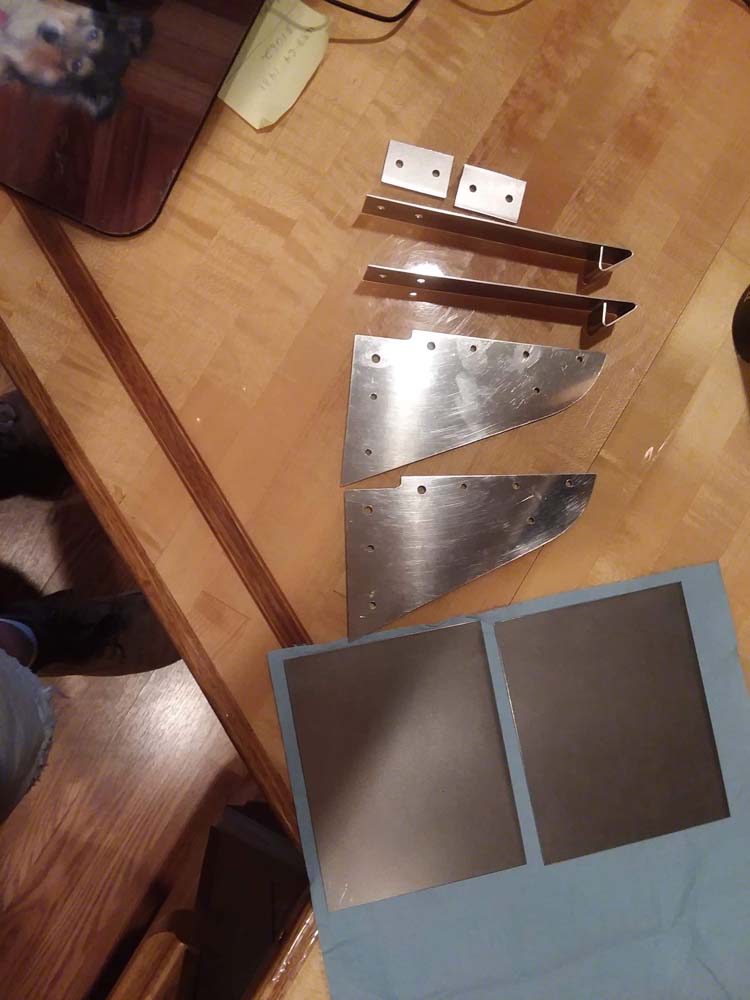
Bob Hachmann sends his first goody package of metal ammo box parts. The square pieces are the striker plates which sit at the base of the tail box lips. The other pieces will later be used on the radio operator’s ammo box.
Photo taken 17 August 2020.
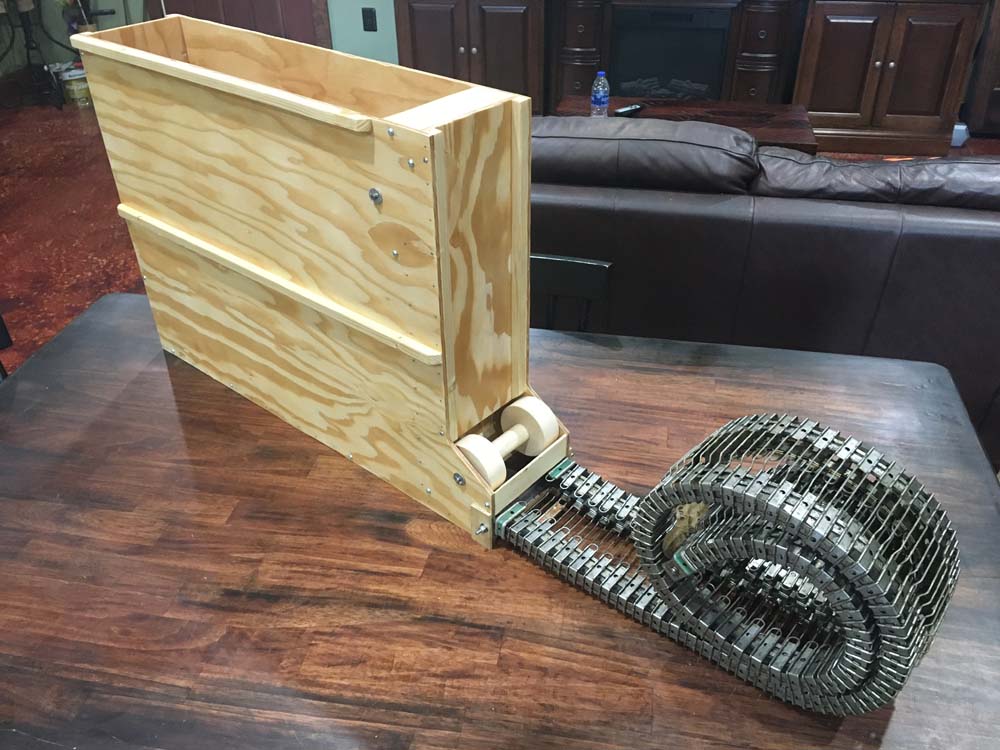
The one ammo chute we have (so far) is fitted to the left-hand tail box for testing.
Photo taken 4 October 2020.
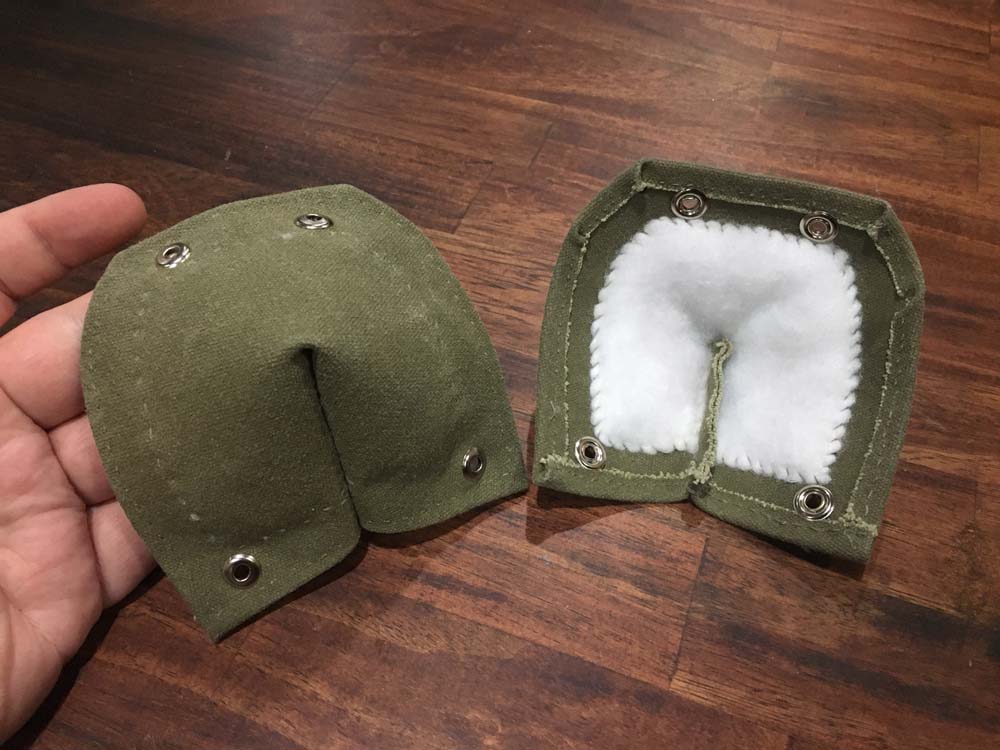
My wife Megan hand sews the corner bump pads using the exact materials called for in the blueprints.
The canvas is smelly – but as I told her, “it smells like history!”
Photo taken 15 October 2020.
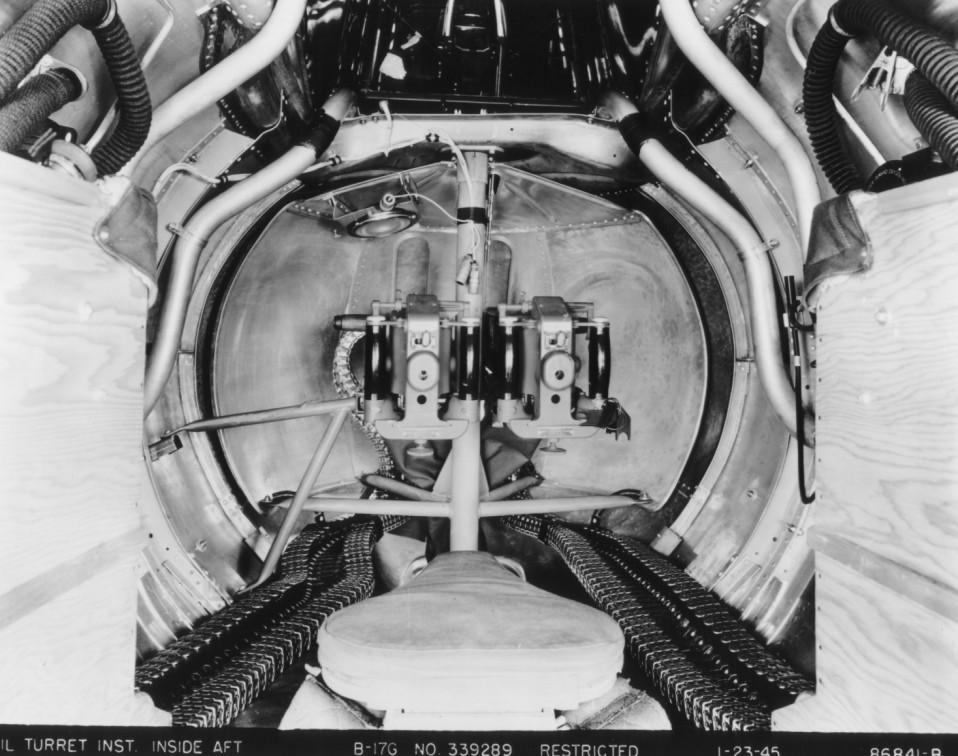
The tail gun position of “F-Fox” (43-39289, 92BG). While this aircraft has been converted into a “Pumpkin” style tail at the United Airlines Modification Center in Cheyenne, Wyoming, the ammo boxes and chutes remain largely the same.
The corner bump pads have been poorly installed here: the pads are crooked and the felt stuffing is poking out.
Photo taken 23 January 1945.

One of Megan’s corner pads are attached to the left-hand tail ammo box – the last step before completion
Photo taken 16 October 2020.
Hey guys,
Ray called me up today saying that he’s been getting lots of questions lately along these lines:
“‘Seeing progress on Liberty Belle is all well and good, but when are we going to see more from Lucky Thirteen?”
Well, here you go.
Here are some pictures taken today of Ray’s work on the bomb bay from Lucky Thirteen. Most of this area is original, coming from 44-83316 (being altered to adhere to F specifications). Station 5 is also underway, coming from 444-83387. It wont be long before it will be time for me to apply the ALCLAD markings to her skins.
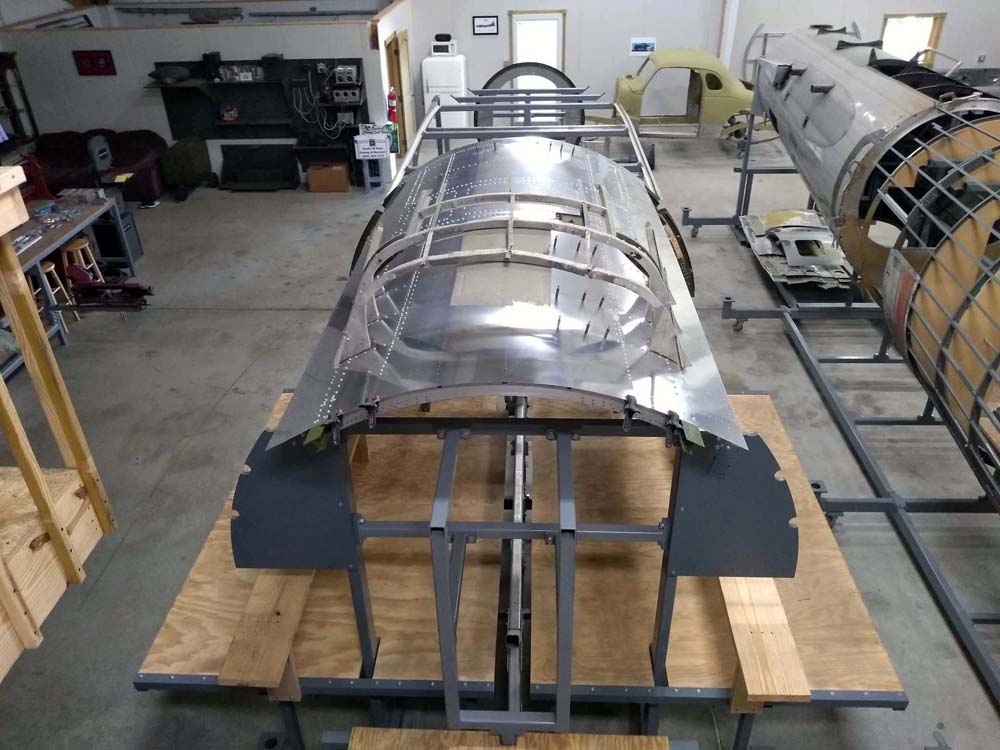
The bomb bay roof of Lucky Thirteen. A portion of the turtle deck’s framing from 44-83316 has been left in place. This area originally held the aircraft’s two Type A-2 life rafts.
Photo taken 7 October 2020.
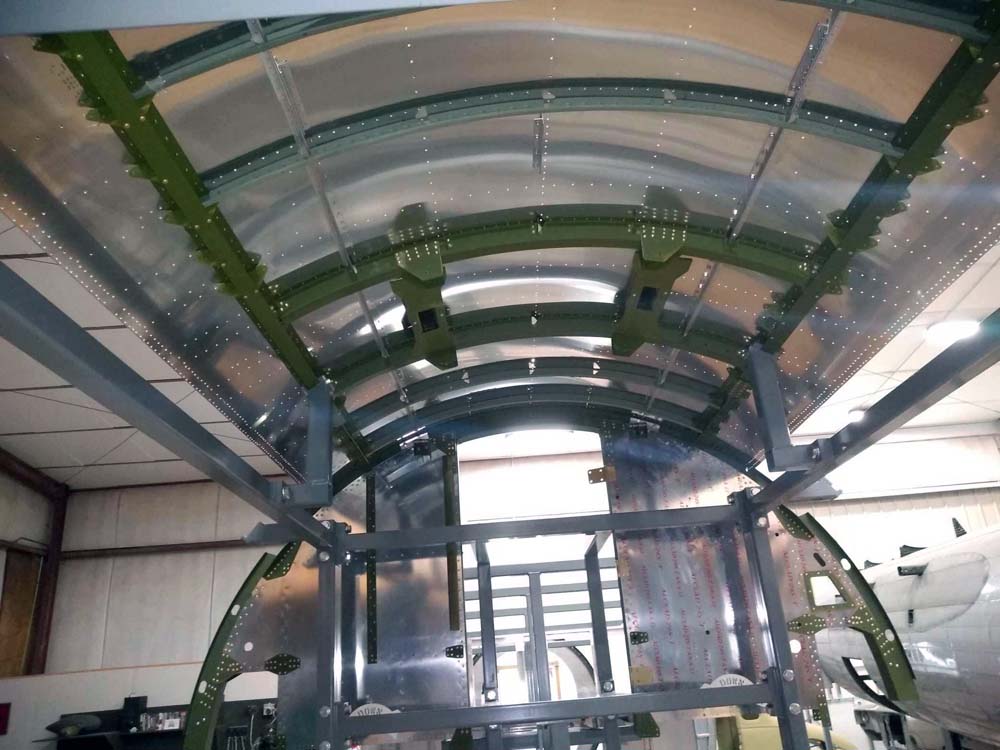
The inside of the bomb bay roof being rebuild for Lucky Thirteen.
The two hat channels you see will later support the main bomb racks. The forward hat channel is an original while the rear one is a replacement due to corrosion. The left longeron is now permanently in place; the right longeron will follow soon.
Photo taken 6 October 2020.
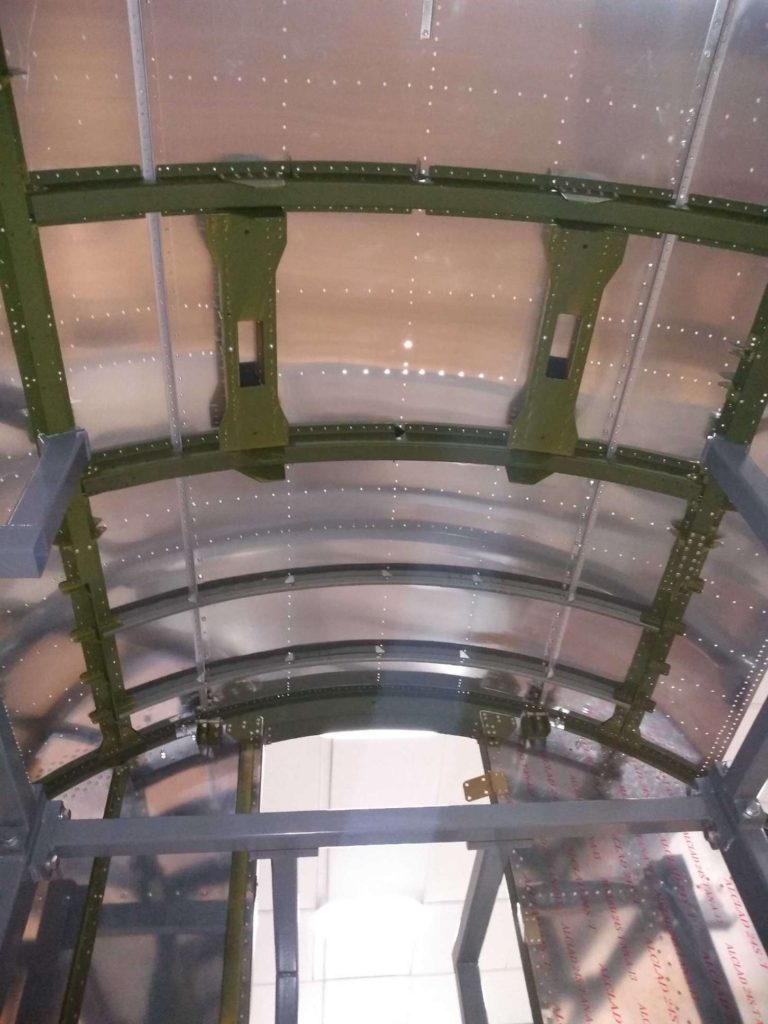
While Boeing tended to leave their interiors bare, Douglas-built B-17s were more a bit more free with their use of zinc chromate dips. Mary Alice (44-83735) of the IWM’s American Air Museum is a helpful reference here as much of her bomb bay is untouched.
Photo taken 6 October 2020.
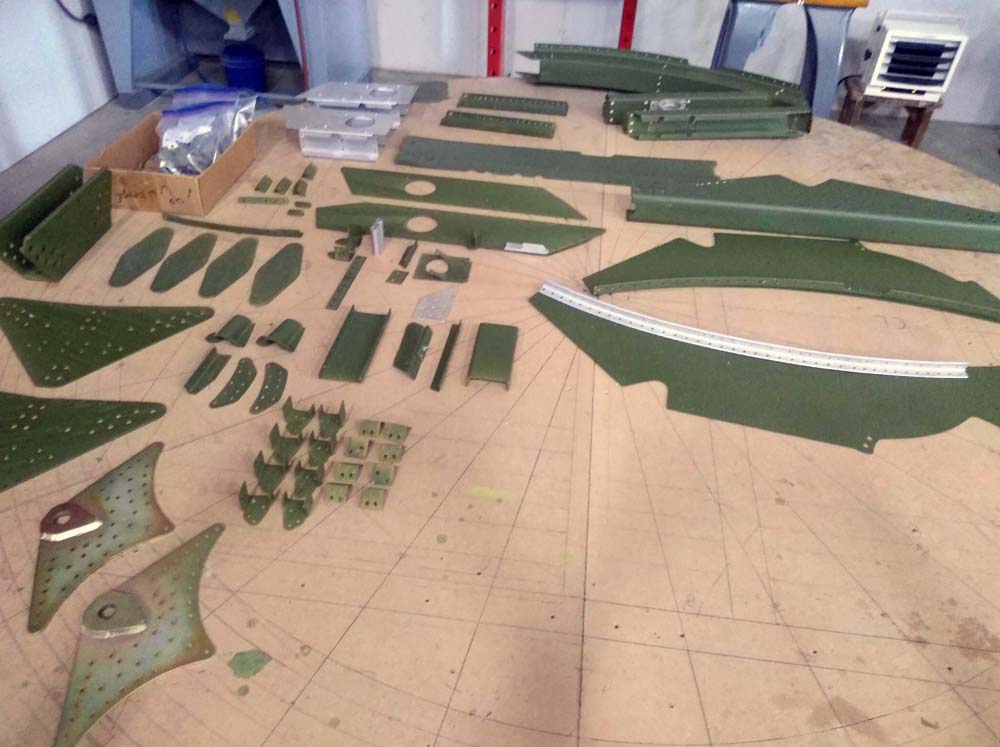
Pieces on the table being prepped for installation. This includes Station 5 (the forward wall of the radio compartment), which will come from 44-83387.
44-83387 was notably used in the film Twelve O’Clock High (1949).
Photo taken 6 October 2020.
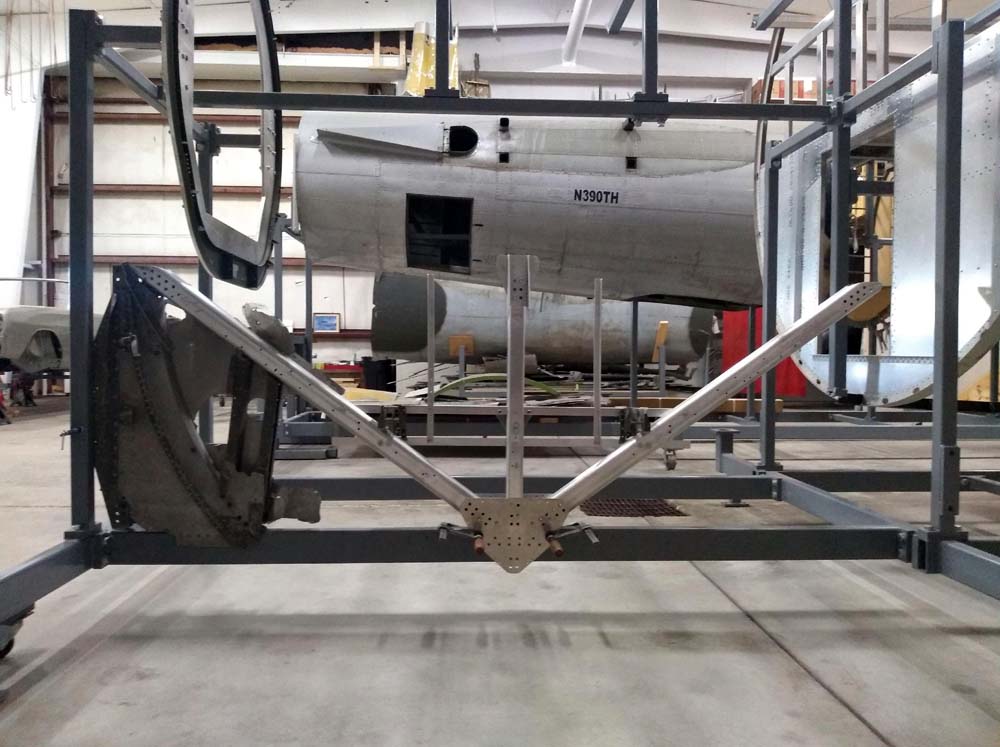
The carry-through spars which which will pass beneath Station 4 in the bomb bay. These require precise work, particularly since whoever first removed them did so with a crowbar. Ugh.
Photo taken 6 October 2020.
This one was a very happy surprise.
I mentioned before that Karl and I consult on the restoration of Memphis Belle at the National Museum of the US Air Force.
Well, I got my start recreating manufacturer labels and the interior chartage on Belle. I also provided color-matched material accurate for the table-tops in early-B-17 radio compartments. During one of my visits, Roger Deere, the Restoration Division Chief, showed me their recreated seat cushions, emphasizing the unique metal bits which clip them to their seats. I teased that we could use a pair for Lucky Thirteen. He said he would happily ask their upholstery volunteer about it, Richard Issacks, if I would provide the material.
So I did.
Between government shut downs, the Chinese virus, and an illness which briefly pulled Issacks away, a VERY long time had passed since then. I had almost given up on the cushions when this giant box showed up on my doorstep. I could hardly thank Roger and Richard enough for their donation, but when I wrote them a thanks, it was they who thanked me. Working on the Belle – even in my own tiny contribution – was a childhood dream come true, so to see them write that meant a great deal to me. Thanks guys.
These seats will go to the pilot and co-pilot’s positions on Lucky Thirteen. The markings on them are correct for an F-model B-17. The seats were upholstered with kapok, whose hollow fibers saw it commonly used in flotation devices throughout the war.

The newly-donated seat cushions sitting on my living room couch.
A later version of these cushions read “Army Air Forces” and had “US Army” written on the sides.
Photo taken 10 September 2020.

Up until partway through the F series, the bombardier’s seat on the B-17 was similar in design to those used in the cockpit. This photo, taken from an E model, is the best wartime example I could find of this style of seat cushion.
The bombardier’s bucket seat was usually removed overseas, with the bombardier sitting on the floor (like in Memphis Belle). The bombardier’s bucket seat, as well as a similar seat in the radio compartment, was eventually replaced by Cramer posture chairs.
We have done a great deal of research on Cramer Posture Chairs but have not had the time to build the three needed for Lucky Thirteen. If anyone with experience in metal work would be interested in replicating these chair components, we can get you started!

A manual photo shows the right side of the co-pilot’s position. The seat cushion takes up the bottom of the photo.
The white item hanging from the line is the aircraft’s checklist. We replicated this for Belle and Lucky Thirteen.
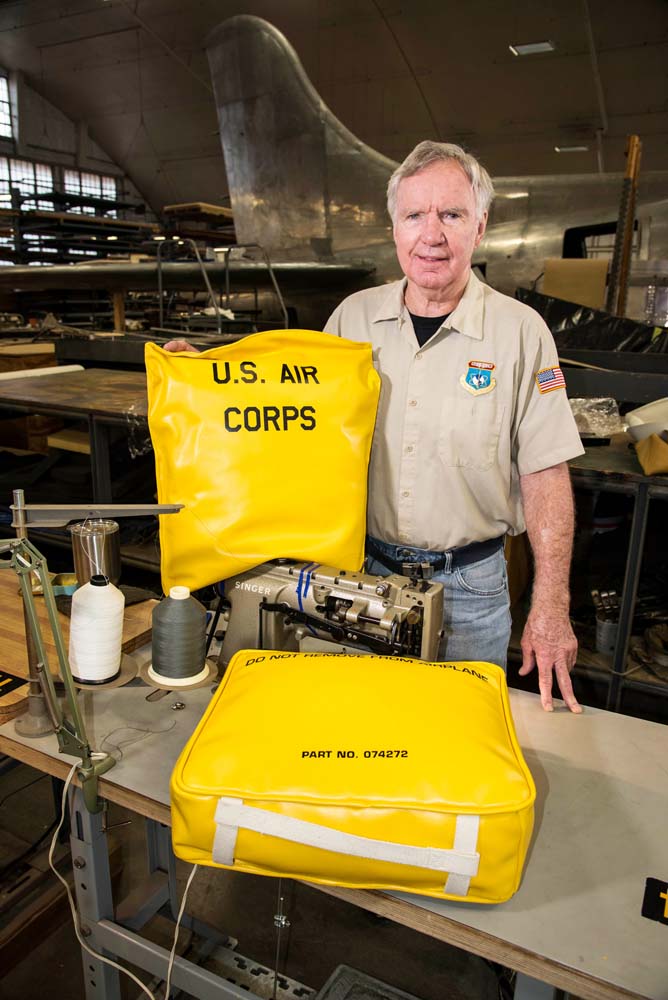
A Ken LaRock photo of NMUSAF Restoration Division upholsterer Richard Issacks.
Richard served over Vietnam as a B-52 pilot and after the war worked for American Airlines.
Now that the anniversaries are out of the way, we can get back to the regular updates.
I have got to tell you – some BIG things have happened in the last couple weeks. Sharing them all with you is going to be fun.
First up is an update regarding the airframe itself. Station 4 is back in the jig and the process of riveting it to the bomb bay roof has finally begun. For us, this is truly exciting. The only downside is that, because the jig runs through the center of the stations, we wont be able to leave the cockpit door in place.
Speaking of, the charts for the Fuel System and Aircraft Data (Weight/Rigging/Systems) are now permanently installed to the door as well.
Lastly, I thought I’d share today a beauty shot of the 2,000 lb bomb hoist chain. While I cleaned the hoists themselves a while back, the chain stayed at home with me. It was absolutely smothered in cosmoline. It took a while to get it all off, but I think the result speaks for itself.
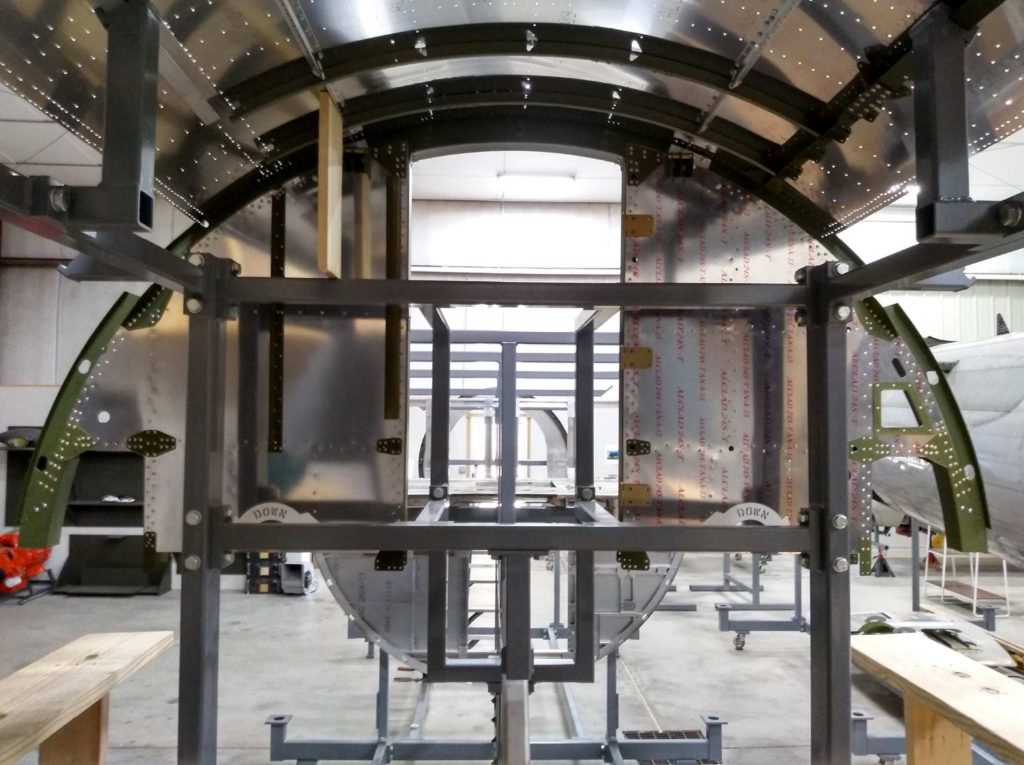
Station 4 is placed in the jig and the process of riveting the roof together begins. Much of the roof structure has been removed for chromating.
Photo taken on 11 September 2020.
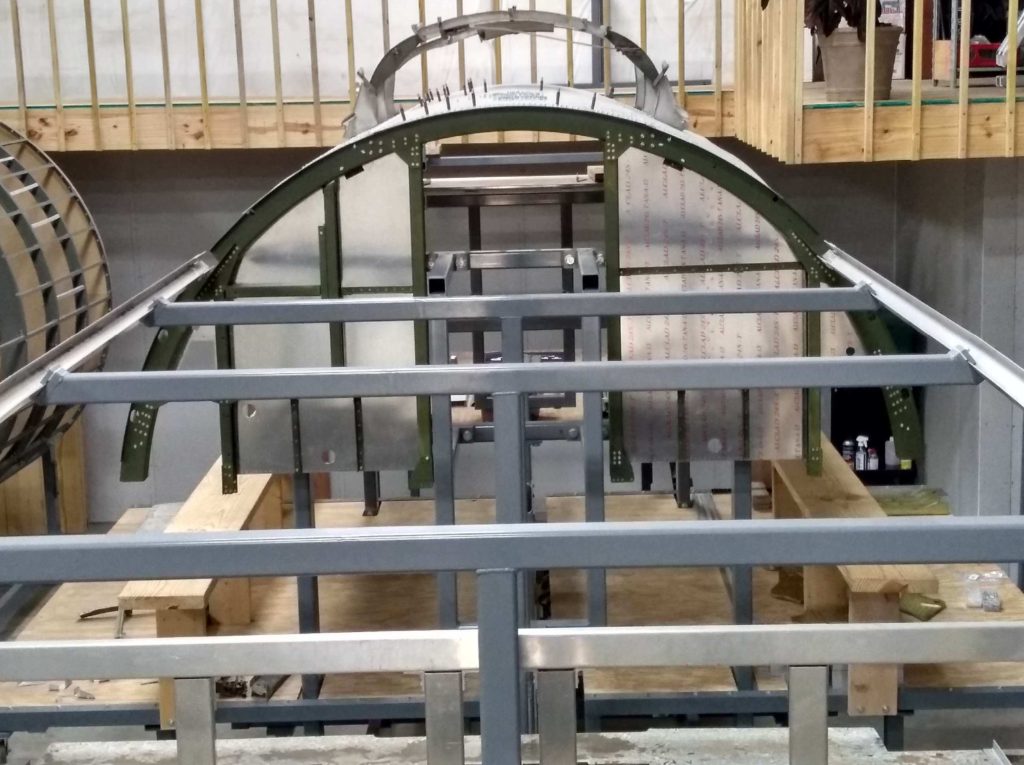
Station 4 is placed in the jig and the process of riveting the roof together begins. Much of the roof structure has been removed for chromating.
Photo taken on 11 September 2020.
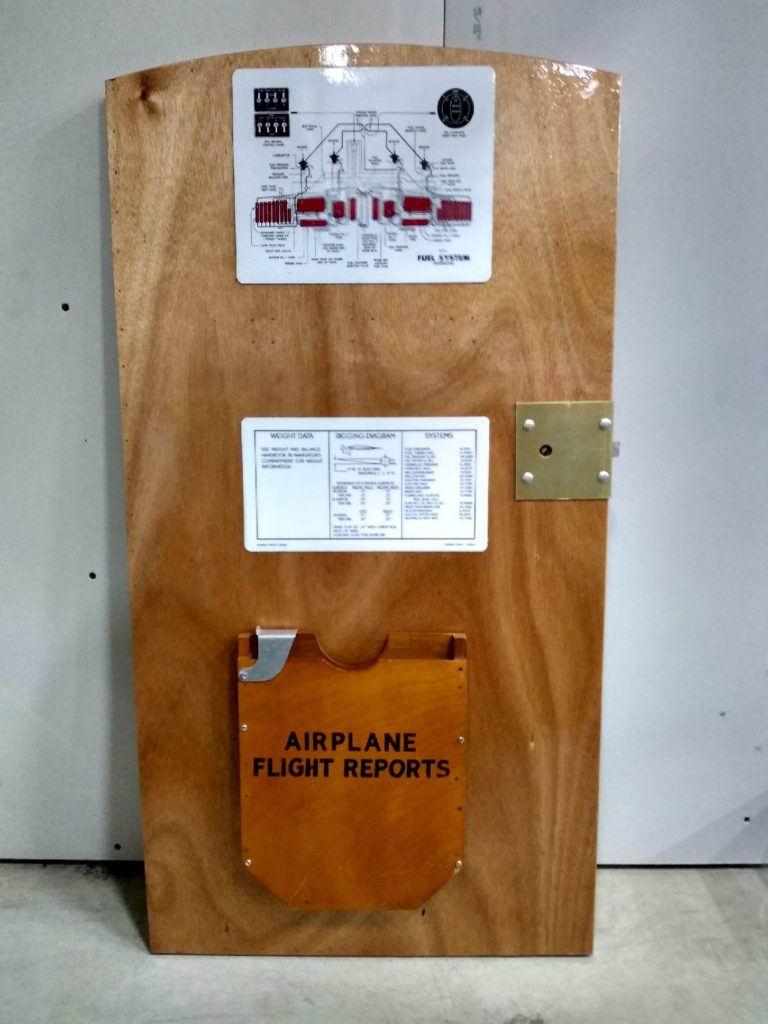
The Fuel System and Data Charts are glued to the cockpit door and sealed.
I look to get some nice detail photos when I deliver the tail gun ammo boxes to Ray.
Photo taken 11 September 2020.
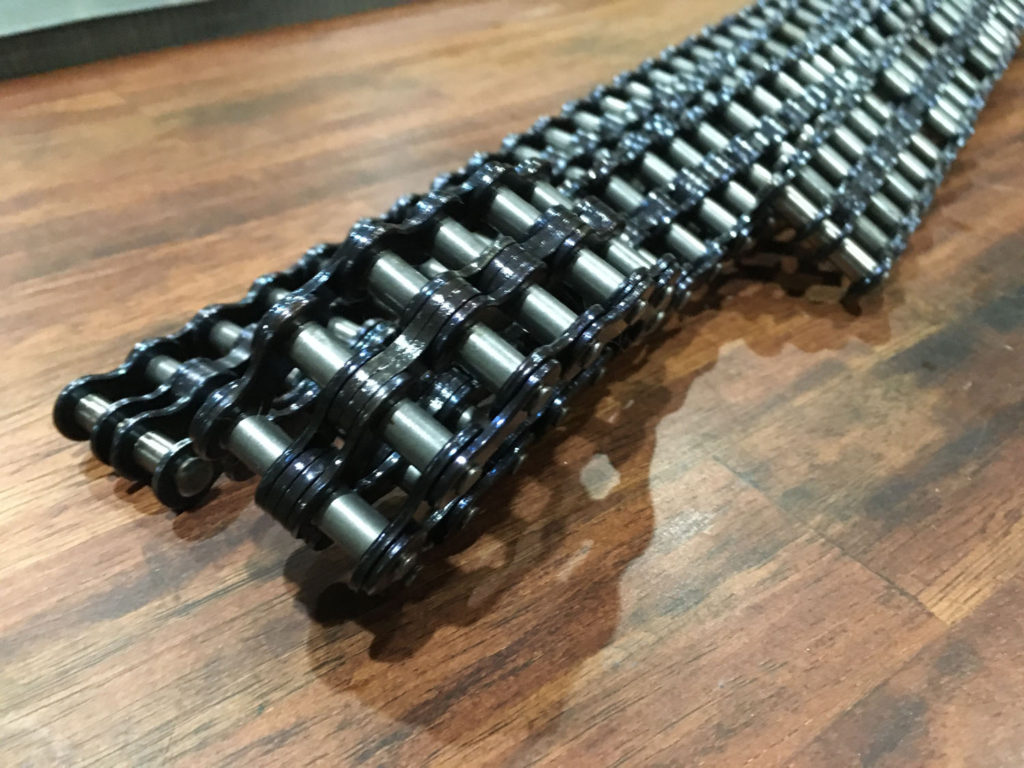
The fully cleaned 2,000 lb bomb hoist chain.
This model was unique to the C-3A Bomb Hoist set. The standard C-3 set contained canvas hoist straps rated at 300 lbs, 500 lbs, 1,000 lbs, and 2,000 lbs.
Photo taken 8 September 2020.
